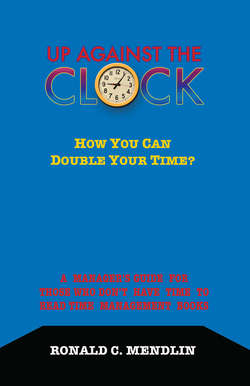Читать книгу Up Against The Clock: How You Can Double Your Time? - Ronald C. Mendlin - Страница 20
На сайте Литреса книга снята с продажи.
LISTS
ОглавлениеDebra: “During the course of a day, I’ll think of things to do, and I shove little notes in my pocket all day long. At the end of the day, I go through my pockets. A lot of stuff that seemed important when it occurred to me gets thrown away, but a few things go on my to-do list for the next day.”
Lists can be helpful—I recommend them for particular uses and depending on your style and needs. It’s important to work with lists in a way that proves useful to you over time. For example, some authorities discourage the accumulation of list-like notes on small scraps of paper, but Debra is on her feet most of the day, so the “scraps method” works for her.
One of the downsides of lists is that you can wind up with too many of them if you’re not careful, especially if you don’t regularly throw away, combine, or update your lists. You could even wind up with a pile of lists on your desk! Make sure you don’t overload any particular list. You don’t want to feel overwhelmed by the sight of any list.
Milt Reiterman, who served as Deputy Superintendent of the San Francisco Unified School District, says, “I keep meticulous lists. But a list is only as good as it can actually serve you in relationship to meeting your objectives. Your list shouldn’t dictate things to you, because sometimes you have to drop things off the list. A list is only one factor in time management; a list is not an end in itself.”
